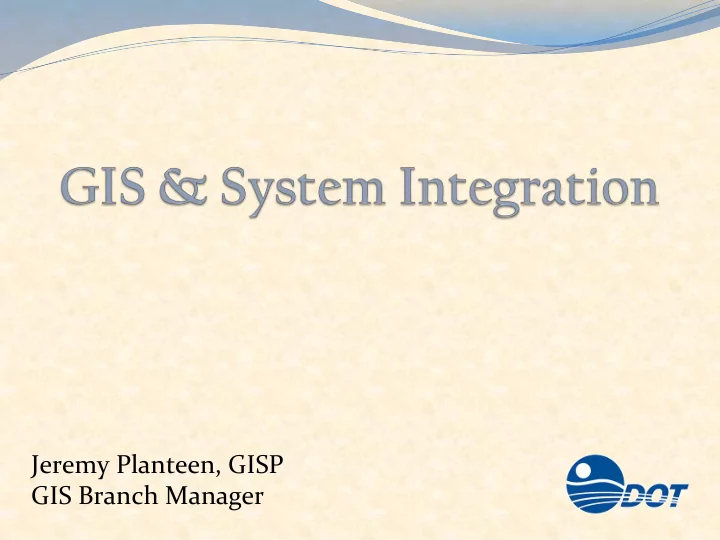

Jeremy Planteen, GISP GIS Branch Manager
Overview ODOT maintains data on a wide variety of transportation data Bridge, billboards, roadway data, etc. Construction and maintenance info Project, asset, and financial data tied to a specific section of road
Managing Roadway Data Roadway data managed using an LRS (linear referencing system) Roadway network broken into arbitrary segments called ‘control sections’ Allows us to specify milepoint(s) along a route where a given attribute or asset is Further broken into ‘subsections’ based on a change to one of a variety of attributes Can get problematic if alignments change Can be hard and inexact for non- Roadway Inventory people to work with
Managing Roadway Data Currently the data is ‘denormalized’ All attributes are in one giant table Lots of redundancy High-resolution data, such as pavement condition, has to be smoothed and information lost in order to mesh with lower-resolution data like traffic, etc.
Managing Roadway Data New system breaks all attributes into separate datasets and the interface manages it as a single unit Allows much better snapshots of small road segments Has a web-based component to let data owners manage their own data Because of the way the data is now constructed, much easier to run automated spatial tools to find problem areas or sample sections
Bringing it Together Agile Assets Used by our maintenance group Current system has no map, locations manually translated from ‘real world’ (e.g. intersection of highway 20 and 5 th St.) to our inventory numbers Error prone, difficult to manage New system integrates directly with Road Inventory data and has a map interface Dynamic generation of ODOT ‘Red Book’
Bringing it Together Pavement Data collected at 100 th of a mile increments Now can be left in original format, enabling better analysis Analysts can create their own, data-driven aggregations
Bringing it Together Traffic Currently data aggregated to our inventory sections, which cross intersections and aren’t logical for traffic analysis New system allows traffic group to maintain their own aggregation system for better analysis
Conclusion Old system was difficult to interface with other systems New system fixes many of the data disconnects Results in much more flexible and intelligent datasets Roadway centerline becomes a true ‘base’ upon which assets and attributes are placed in a way that makes sense for each business system
Recommend
More recommend